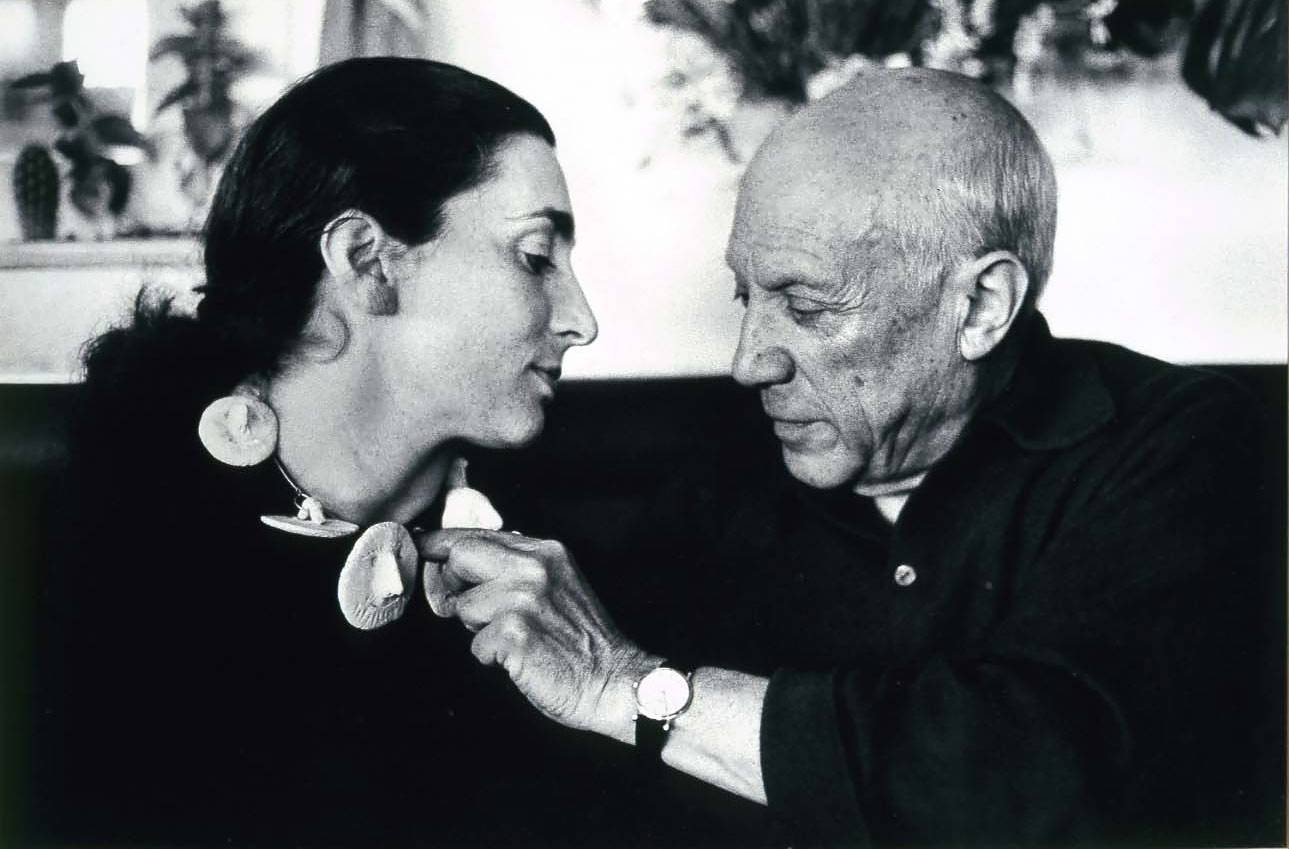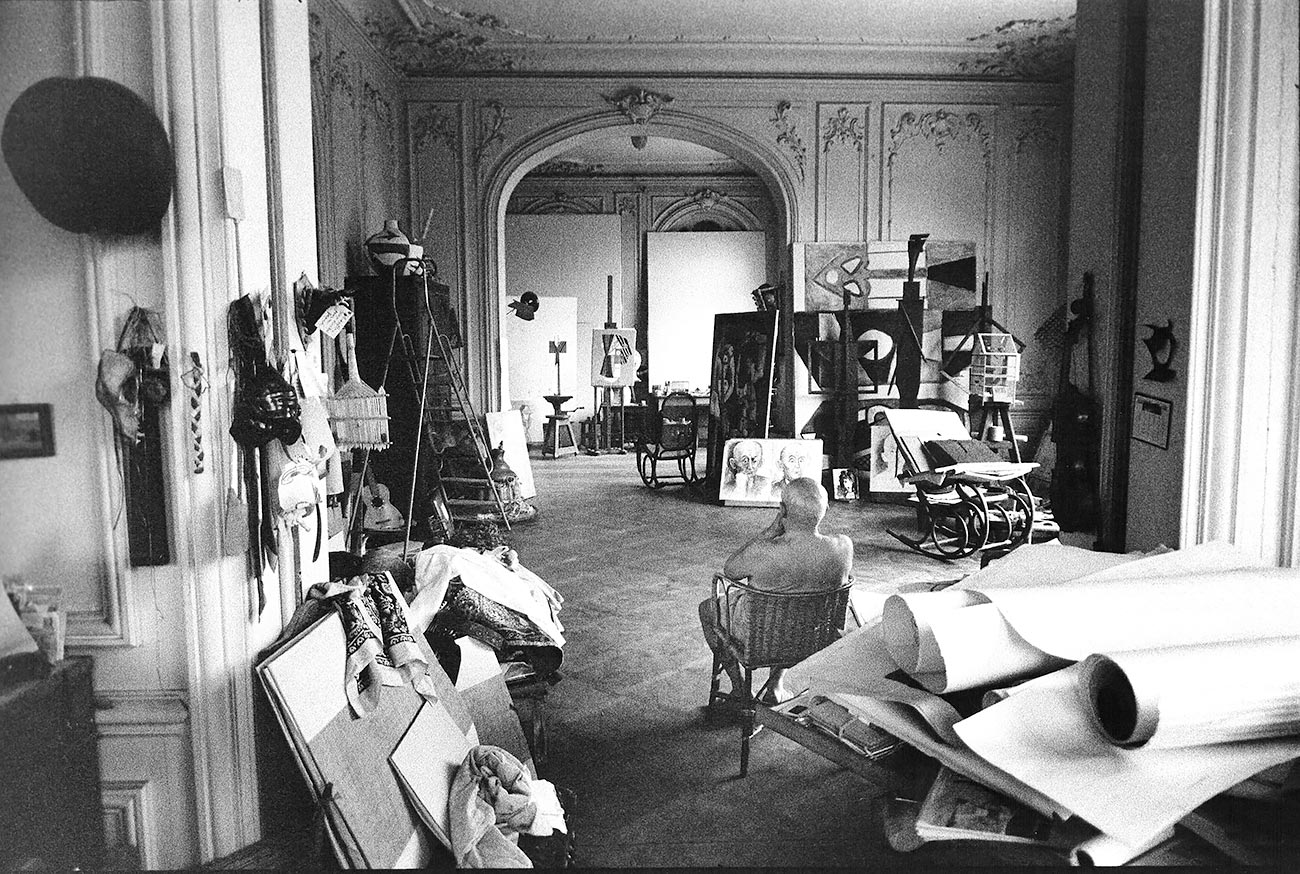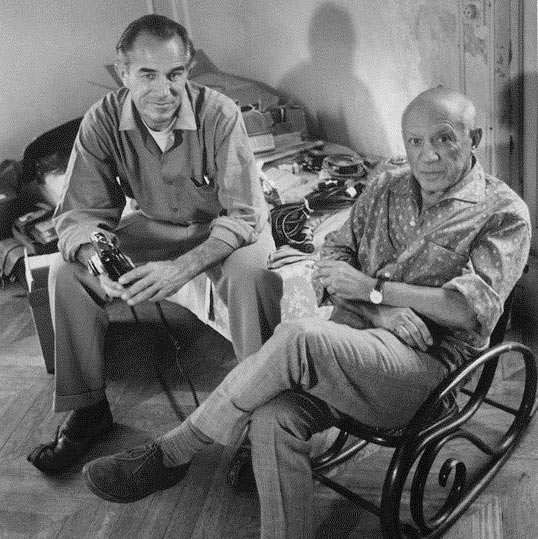An exceptional donation from a private
collection of 100 vintage photographs of
the private world of Pablo Picasso taken
between 1956 and 1973 by David Douglas
Duncan, the famous American war photographer, as well as two portraits of Pablo
Picasso and David Douglas Duncan by Gjon
Mili, plus a print by Judy Caravaglia.
Pablo Picasso was the most photographed artist
of his time, especially during the second half of
his life when his reputation had become plane-
tary. Some will see complicity, others connivance.
Great photographers such as Man Ray, Brassaï,
Lee Miller, Willy Ronis, Robert Doisneau, Robert
Capa and Henri Cartier-Bresson made numerous
portraits of the artist, not to mention Dora Maar,
his companion, whose prints attest to the genesis
of Guernica. As of the 1950s, Picasso had established a real working relationship with certain pho-
tographers that he himself had selected: André
Villers for his cut-outs and photographic collages;
and Gjon Mili with whom he experimented with
creations in the dark using a flashlight to draw ha-
los of light in space. The last years of his life are
immortalized by René Burri, Edward Quinn and,
especially, David Douglas Duncan.

Jacqueline portant le collier en céramique, 1957 © David Douglas Duncan - Succession Picasso 2022
David Douglas Duncan used neither cinematic
techniques nor spectacular staging - he just took
photographs of Picasso among friends and during
moments of creative intimacy.
He explained it like this: "I wasn't an artist or an art
historian... I was just a guy he liked, a guy with a
camera. No more. We were just two men. It's very
important to emphasize that I was not an art pro-
fessional, and that was what he expected of me."
A former war reporter, David Douglas Duncan ne-
vertheless knew how to be discreet: "When I was at
Picasso's house, I spoke very, very little.” He in fact
used a custom-built Leica M3D camera with ex-
tremely quiet shutters so they wouldn't disturb the
Maestro at work, and each image was taken in the
prevailing light conditions. Between them, they
communicated with few words. Duncan didn't
speak French and Picasso spoke no English. Their
common language was a rudimentary Spanish.
Picasso, with his inquisitive mind, was impressed
by Duncan's intrepidity. He had great respect
for the American's courage and was impressed
by his extensive travels. But no matter where he
went the world over, Duncan always returned to
visit his friend. The insatiable Picasso, a cultural
superstar on the world stage, rarely went out since
his notoriety forced him to avoid the limelight. For
Picasso, Duncan was more than a photojournalist.
In his capacity as a globetrotter, he provided him
with many services. In his letters and during his
visits, Duncan kept the painter up to date on the
latest international events.

Picasso dans son atelier regardant Tête. juillet 1957 © David Douglas Duncan - Succession Picasso 2022
No one knows why Picasso called Duncan "Ismael",
that is to say, "God has heard me". We can perhaps
assume that the photographer was a real gift from
heaven, capable of preserving his memory for posterity, that of an artist concerned with his legacy. "In
my opinion, to search means nothing in painting. To
find is the thing." confessed Picasso in 1923 to The
Arts. "And what if Duncan had found and pierced
the mystery of Picasso?" declares Tatyana Franck,
director of Photo Elysée.
"After Alice Pauli's donation of three photographs
by Henri Cartier-Bresson and Martine Franck re-
presenting Alberto Giacometti, Balthus, and Ar -
pad Szenes and Maria Helena Vieira da Silva, this
donation is exceptional in more ways than one
for Photo Elysée," emphasizes Tatyana Franck. "It
allows us to enrich our collections with the photographic work of the author of the book This is
War!, which was a milestone in the 1950s, to endow
them with a remarkable acquisition showing the
entire creative process of the greatest artist of the
20th century, and to strengthen our ties with the
other institutions of Plateforme 10, in particular, the
MCBA.
Born in Kansas City (USA) in 1916 and died in 2018,
David Douglas Duncan obtained a degree in zoo -
logy and Spanish at the University of Miami. During
World War II, he was sent as a photojournalist to
cover the war in the South Pacific, and worked for
many magazines, including National Geographic,
which commissioned him to do exclusive reports.
After the war, he continued his career as a photo -
journalist and worked with the prestigious maga -
zine, Life, for which he immortalized the most im -
portant historical events of his time. In 1971, he was
the first photographer to have a solo exhibition at
the Whitney Museum of American Art in New York.



